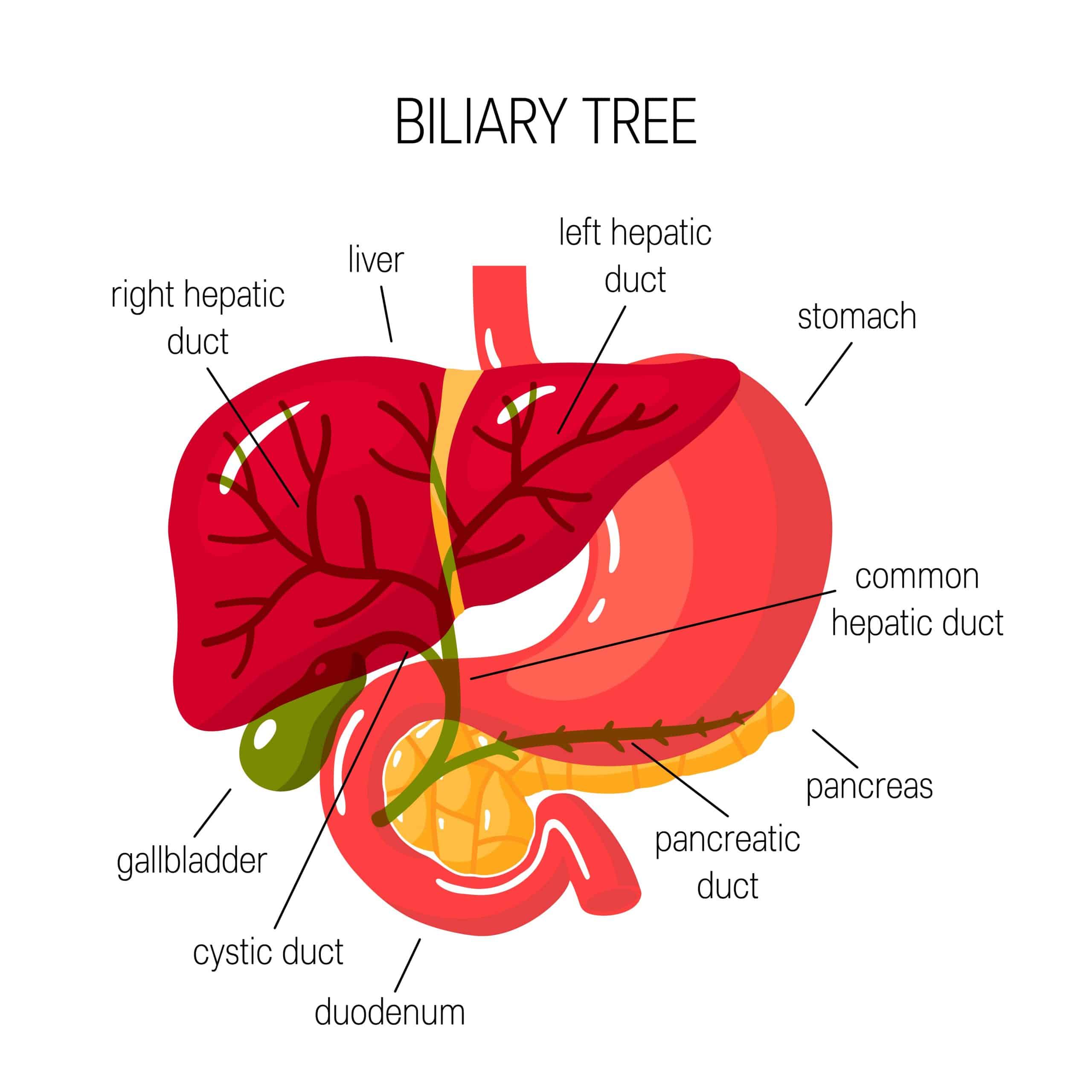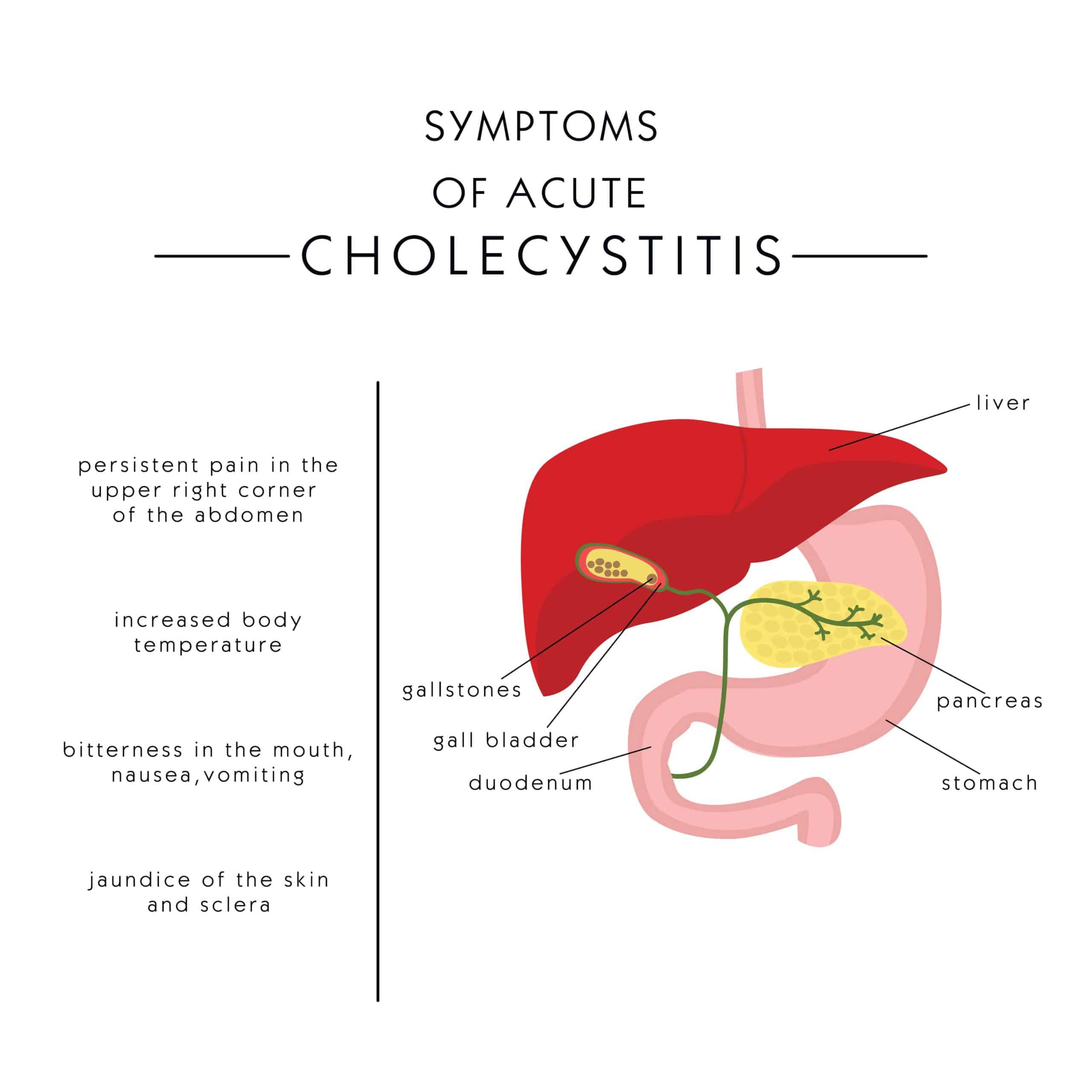What is Hepatobiliary Sepsis?

The biliary tract (also known as the biliary tree or biliary system) refers to the liver, gallbladder, and bile ducts (both within (intrahepatic) and outside (extrahepatic) the liver). The term ‘hepatobiliary’ is used to refer to the liver and bile ducts.
The hepatobiliary tract works together to make, store, and secrete bile, which helps us digest the fat in the food we eat. Bile is a product produced by our body that contains water, bile acids, cholesterol, phospholipids, electrolytes, and a compound known as bilirubin. Some components of bile are made by liver cells, while the rest are extracted from the blood by the liver.
Sepsis is a serious medical emergency. Sepsis refers to the body’s extreme reaction to an infection, which can arise from many organisms, including bacteria, viruses, and parasites, although bacterial infections are usually the main culprit. Sepsis happens because these infections trigger a chain reaction throughout the body, and it is often a life-threatening medical emergency that can lead to tissue damage, organ failure, and death if not treated in time. Note that while sepsis is not contagious (i.e. you cannot spread sepsis to other people), the infection that led to the sepsis might be contagious, and you can spread it to other people around you.
When sepsis occurs as a result of an infection within the hepatobiliary tract, it is referred to as hepatobiliary sepsis. Sepsis of the biliary tract is often a very severe disease due to its course and potential for rapid deterioration.
What are the Symptoms of Hepatobiliary Sepsis?
As hepatobiliary sepsis is a sign of infection, symptoms commonly include:
- Fever
- Abdominal pain (often severe)
- Nausea and vomiting
- Loss of appetite
- Signs of jaundice
- Yellowing of the eyes/skin
- Itchiness of the body
- Changes in stool colour (turning pale) and urine colour (turning dark yellow)
- Feeling lethargic
- Shivering and feeling cold or ‘chilly.’
- Confusion and disorientation
- Shortness of breath
- Clammy or sweaty skin
How does Hepatobiliary Sepsis occur?

Infections within the biliary tract most often arise from either the gallbladder (in a phenomenon known as cholecystitis) or from the common bile duct outside of the liver (in a phenomenon known as cholangitis). While there are many types of organisms that cause infections, bacterial infections are usually the most serious ones and have the largest propensity to lead to sepsis if it increases in severity.
Gallstones blocking the bile ducts is a common cause of infection. Infections might also happen as a result of previous medical procedures done to the biliary tract, such as surgery or stenting. Other causes of infection include narrowing of the bile ducts (strictures), cancers that grow to either block the hepatobiliary tract or disrupt the normal functioning of the hepatobiliary tract, and infections that might have spread from other places, such as from the lungs in the case of tuberculosis (TB) infections, or from other locations in the gut, such as the large intestines.
The reason bacterial infections happen due to these causes is because of bacterial build-up within the biliary tree. When the normal pathway of bile is blocked by gallstones, strictures, cancers, etc, bile and other secretions from the liver are unable to pass out of the normal passageway. When these secretions are stuck, bacteria can end up settling and building up on these structures. This results in local inflammation and infections to arise. If not promptly treated, the infection can grow to become very serious, and sepsis can occur.
How is Hepatobiliary Sepsis diagnosed?
Sepsis is a medical emergency. If you suspect that you or a loved one has a serious infection and have any of the aforementioned symptoms, it is important to get prompt medical attention and to act fast.
Hepatobiliary sepsis is usually diagnosed via a thorough clinical assessment. This includes taking a medical history from you, doing a physical examination, and the institution of various investigations that includes blood tests and medical imaging such as x-rays and CT scans.
- When you first meet your doctor, they will often first begin by taking a history from you. This includes trying to get more information about the onset of your symptoms, your own medical history, a list of medications you may be on, as well as other relevant information that might help in the diagnosis, such as whether or not there may be any previous exposure to infections, prior surgical history, and other risk factors that you might have.
- A physical examination usually involves obtaining your vital signs, such as your heart rate, blood pressure, and oxygen saturation in your lungs, as well as performing quick checks on your abdomen and chest to look for any signs of sepsis. It is important to let the doctor know if you experience any pain on a physical examination because it is important information that might help to pinpoint the location of the infection.
- Blood tests might be taken from you and may be done to check for the presence of any bacteria in your blood.
- Imaging of your body might also be taken through ultrasound scans, a CT scan or an MRI scan. This will be dependent on what information is found out during your history and physical examination, and more details about what might need to be done will be explained to you.
What are the treatments for Hepatobiliary Sepsis?

Treatment for hepatobiliary sepsis will usually depend on the cause, course, and location of infection. It will also depend on your physical state during presentation. However, some common principles remain for the treatment of all sepsis cases, and these include:
- Antibiotics will be given to you either orally or through an intravenous (IV) drip. Antibiotics work to help kill off bacteria and will be instituted very quickly upon diagnosis of sepsis.
What is an IV line?
An intravenous (IV) line might be placed into a vein on your arm. IV lines are very effective because they provide direct access to your blood vessels and allow for rapid delivery of fluids and medications.
- If you are in pain, painkillers (analgesics) will also be given to you to help with your symptoms.
- Likewise, if you are running a fever, medications to lower your body temperature (antipyretics) will also be given to you.
Depending on the location of sepsis, you might also need to have surgery or a drain inserted into your liver to help to drain out the infection. These options will be discussed with you through your care team, and all the appropriate risks, benefits, and alternatives of the various procedures will be explored with you.
As sepsis is a serious medical emergency, treatment is usually very fast-paced and often instituted very rapidly. Thus, if you have any concerns or questions, be sure to bring them up with your Gastroenterologist.
Summary
There are many causes of hepatobiliary sepsis. Because sepsis is serious and very dangerous, it is important to get prompt medical attention to ensure you get treated early and to prevent any further complications.
References
- Sepsis. (2021, September 10). Www.nigms.nih.gov. https://www.nigms.nih.gov/education/fact-sheets/Pages/sepsis.aspx
- CDC. (2021, January 27). What is sepsis? Centers for Disease Control and Prevention. https://www.cdc.gov/sepsis/what-is-sepsis.html
- Levy, M., Fink, M., Marshall, J., Abraham, E., Angus, D., Cook, D., Cohen, J., Opal, S., Vincent, J.-L., Ramsay, G., Balk, R., Bernard, G., Bion, J., Carcillo, J., Carlet, J., Dhainaut, J.-F., Evans, T., Fry, D., Gerlach, H., & Lowry, S. (2003). E X P E RT PA N E L. Intensive Care Med, 29, 530–538. https://doi.org/10.1007/s00134-003-1662-x

